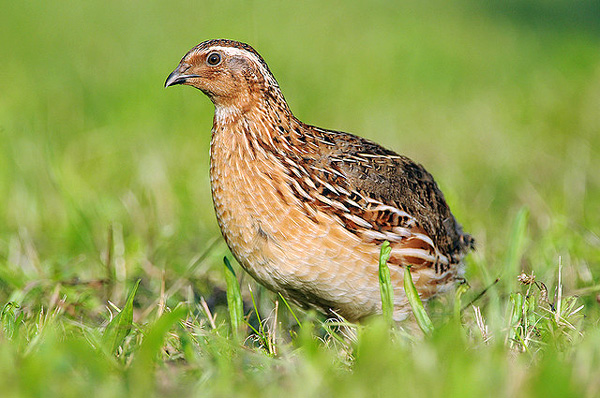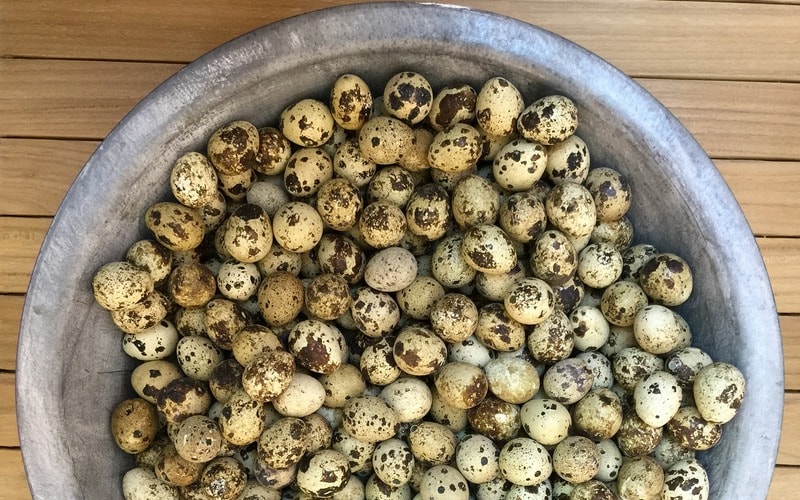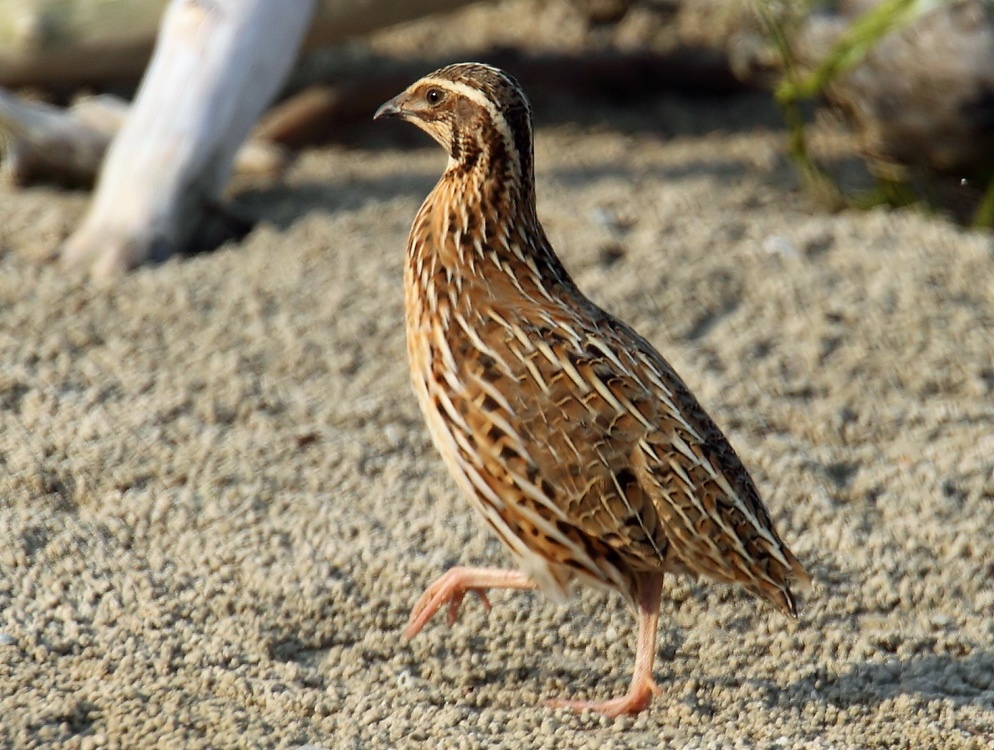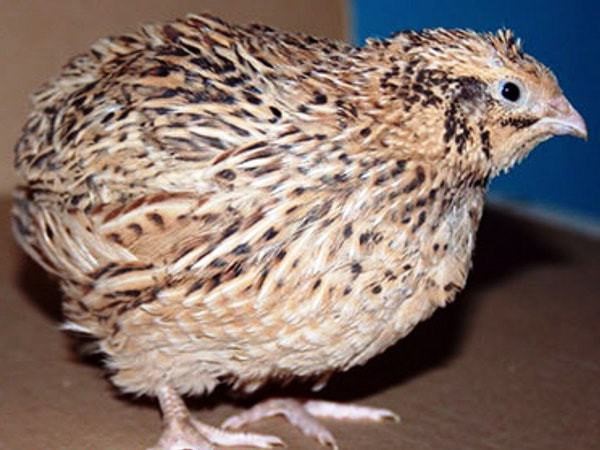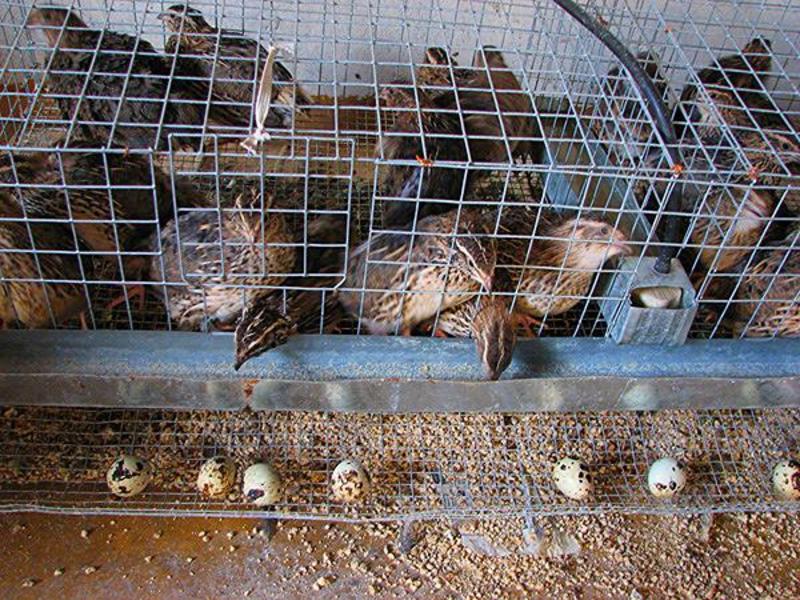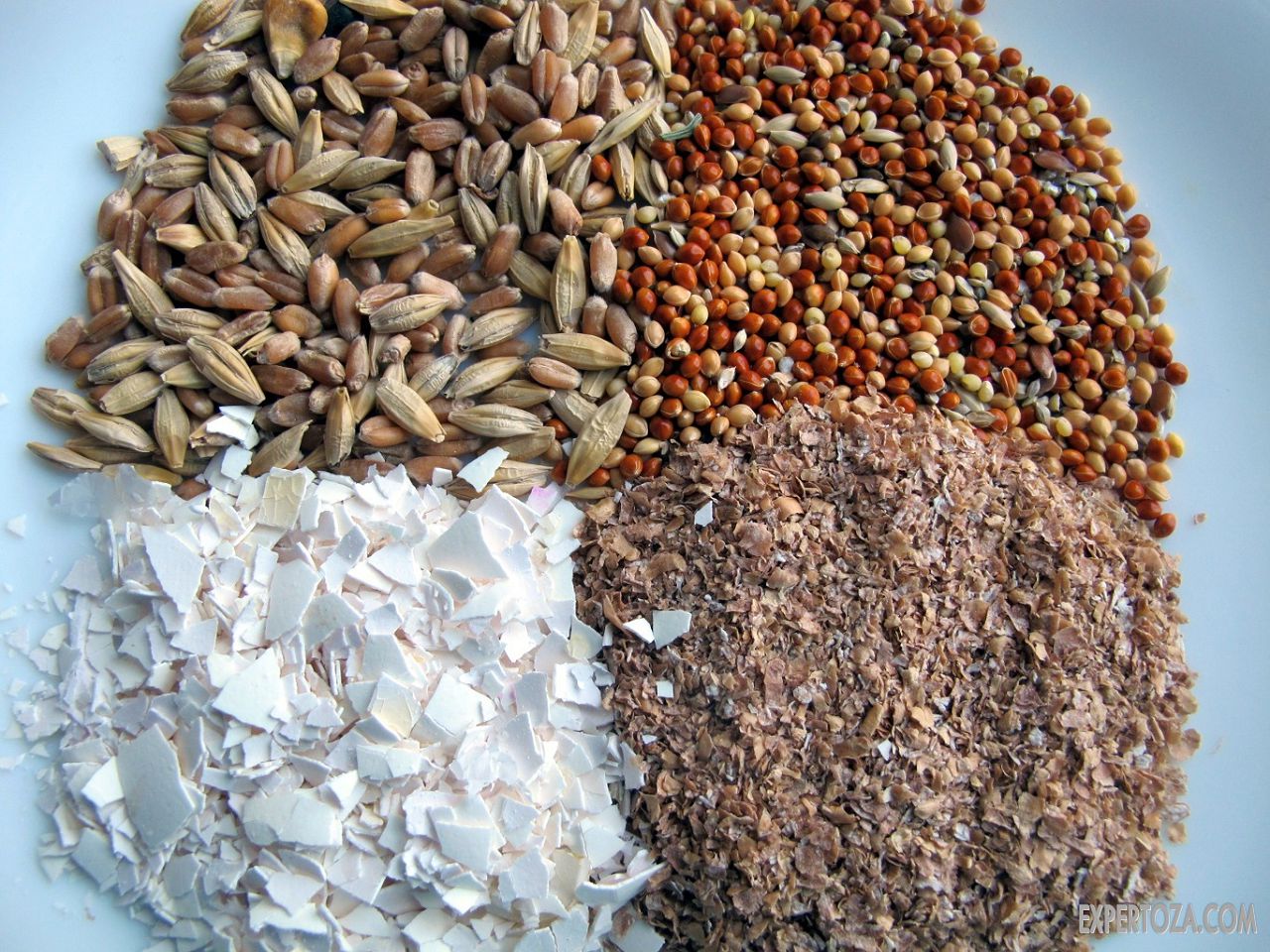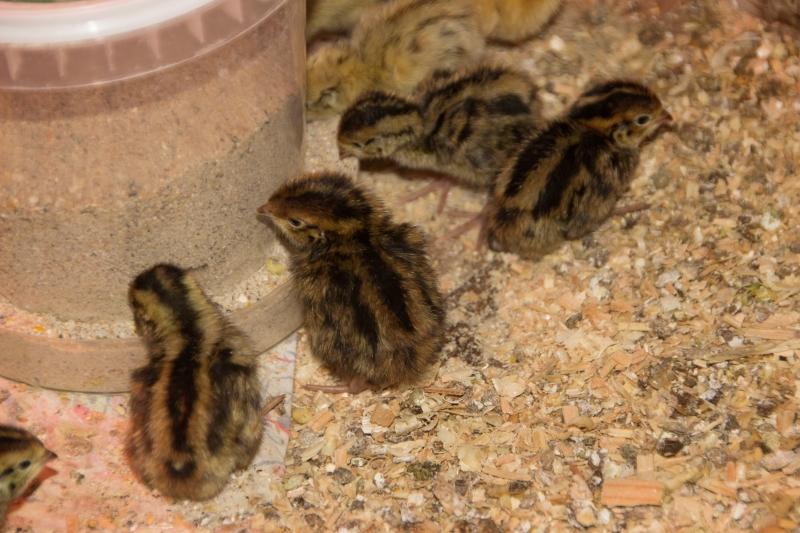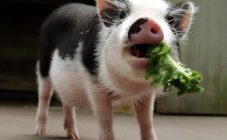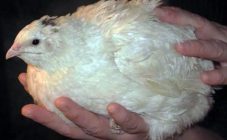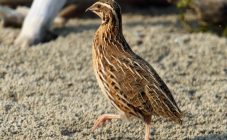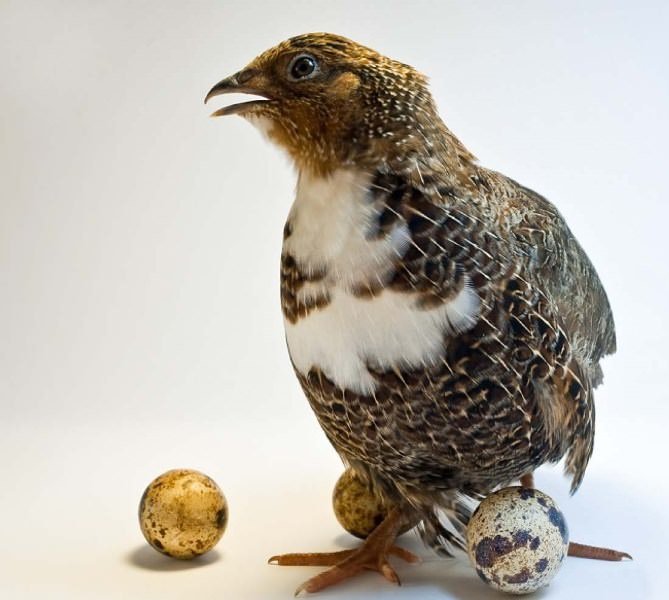Content:
Breeding quail at home is considered a simple and profitable business. The poultry can be used to produce eggs or for meat. Growing and caring for quails has its own characteristics that must be taken into account before starting breeding.
Poultry information
Quail, or common quail, belongs to the order of Chicken-like, subfamily Partridge. The bird is considered a small relative of the chicken. Tasty meat and healthy quail eggs attract hunters. The number of birds regularly resumes in several reserves, so hunters do not cause much damage.
Today, quail breeding at home is a popular and profitable business. There are many domestic breeds; they differ from their wild relatives in higher productivity.
Quail has been used since ancient times as game, as a song or decorative bird. Sometimes they were used in quail fights.
All quail breeds can be conditionally divided into:
- Decorative;
- Meat and egg or universal (Estonian, NPO "Complex", Manchurian golden);
- Egg (Marble, Japanese quail, English black, English white, Tuxedo);
- Meat (Texas White, Pharaoh).
Signs of an egg bird:
- The weight of females - up to 150 g, males - up to 130 g;
- Females begin to lay eggs from 1.5 months;
- The weight of one testicle is up to 12 g, one individual lays up to 340 eggs per year.
Meat breeds are distinguished by their high weight - up to 500 g.
It is impossible to give an unequivocal answer which breed is the best. The characteristics of each of them will be different. The breed is selected based on the purpose of breeding the bird at home.
Characteristics and features of rocks
In the household, it is recommended to breed purebred quails without mixing different breeds. Crossbreeds often do not inherit parental traits, chicks will hatch weak, with low weight and egg production.
When self-breeding quail, it is important to be able to distinguish females from males. If you plan to keep egg breeds, then you need to ensure that the number of females is greater than males. According to statistics, the appearance of males and females from eggs is the same. To form the right flock, you need to learn how to find the differences, what a quail and quail look like:
- Females are less physically active than males;
- Comparison of the plumage of birds. The color of the females is brighter, especially in the breast area, where the feathers are painted with small black dots. Males have a more uniform color on the chest;
- The feathers on the head of the male are more contrasting than that of the females;
- Females have a lighter beak than males. In male quails, the beak is larger;
- The physique of males is larger than that of females, although females may be larger in weight. But in appearance they are more proportionally folded. It is more profitable to raise females;
- Quails differ in singing. The voice of the quail is rough, loud, in females it is thin and pleasant;
- Differences in the secretory glands. In adult males in the area of the cloaca there are noticeable tubercles, in females in this place an equal surface of dark pink color.
Recommendations on how you can independently distinguish quail from quail is useful to know at the initial stage of bird breeding.
If you watch the birds for a while, you can easily distinguish the female quail from the male. So you can independently choose which individuals in the herd will be more.
Popular breeds, all about quails:
- Pharaoh (pharaoh). Belongs to the meat breed, is the most popular, according to farmers. Broiler birds do not have a high egg production (about 200-220 eggs per year), but they are quite large in size. An adult male weighs up to 270-300 g. Against the background of other species of quail, Pharaoh broilers look large. The breed in domestic and industrial agriculture is bred in Russia and abroad. Of the shortcomings, a peculiar color of feathers is distinguished, which is similar to the color of wild quails, and the whimsicality of birds to the conditions of detention;
- American albino. One of the best meat breeds. Males grow up to 350 g, the female can weigh up to 400 g. The bird is unpretentious in care, consumes a lot of food, and quickly gains weight. To increase body weight, you need to stock up on feed;
- Japanese quails. The breed is used for breeding hens. The weight of adult quails is small - from 110 to 150 g. With normal growth and development, the bird can begin to lay eggs at 35-40 days. Japanese quails can lay up to 320 eggs per year (average egg weight is 10 g). Egg production is high in young individuals; over time, it decreases several times. Japanese quails are unpretentious in content, resistant to diseases. At the age of 20 days, you can distinguish the male from the female by color - in males, the color is with dark brown spots, in females, the plumage is with light gray spots. The cock's beak is darker than that of the chicken;
- English white quail. The breed is good for breeding, especially on an industrial scale. The color of the feathers is white, the color of the carcass is pale pink. The average weight of an adult quail reaches 180 g. These quails are mainly used for breeding for meat because of the attractive carcass color for buyers. The egg production of the breed is relatively high - up to 280 per year. The English white quail has a drawback - it is difficult to distinguish a male from a female by external signs. They can be distinguished by their secretory glands at the age of 50-56 days. In males, the cloacal gland is pinkish; in females, it is blue;
- Manchurian golden quail. The birds are distinguished by an unusual color with a golden tint. For novice farmers, the breed will be a good choice, as it can be used as both a meat and an egg breed. The average weight of a carcass reaches 200 g. A female per year can lay up to 280 eggs weighing 15 g. Due to the light plumage, the color of the carcass is pleasant, which gives great consumer value. Manchu quails are unpretentious in cultivation, do not consume a lot of feed;
- Estonian quails (kitevers). The breed has a lot of advantages that make it a leader among other breeds, according to experienced farmers: a high percentage of egg fertilization (92%), resistance of birds to many diseases typical for quails, high viability, and rapid weight gain. The female and male are easy to distinguish as early as 2 weeks after hatching. In females, the head and neck are tinted gray-brown. In males, three yellow stripes can be distinguished on the head. Birds have a relatively long lifespan and a long egg-laying period.
Features of quail breeding
Birds are kept in cages. For a comfortable habitat of birds in cages, you need to know almost everything about quails, to create optimal conditions for them. At temperatures above 25 degrees, the bird becomes lethargic, egg production decreases, at 5 degrees and below it can get sick and die. Temperature conditions play one of the main roles in quail breeding.
The room where the birds will live must be heated. The humidity level should be from 65%. If the indicator is less, then you can additionally put small containers with clean water into the room.
Quails do not like harsh bright light, loud noises - this can be stressful for the bird, and it will stop laying eggs, it will become worse to gain weight. Therefore, it is important to take care of the correct location for the cage.
Requirements for the cage:
- The size of the cage should correspond to the number and age of birds (no more than 5-6 individuals per 1 square meter);
- A homemade cage should provide a closet. Install an egg tray in the cage;
- The floor can be made slightly sloping so that the eggs roll onto the tray on their own. Birds can rush at any time;
- The floor is covered with dry grass, sawdust or shavings. Ash can be added to the cage several times a month in order to prevent diseases;
- Place a litter tray under the cage;
- The material from which the cage is made must be durable, non-toxic;
- In a room where quails are kept, it is necessary to maintain a temperature of 20-22 degrees;
- Lighting can be made slightly red, not bright;
- The drinker and feeder are placed on the outside of the cage.
To feed the quail you will need:
- Small insects;
- Compound feed for quails;
- Milled cereals;
- Corn, millet;
- Chalk, shell;
- Vitamin and mineral supplements;
- Herbs.
Periodically, foods containing calcium (egg shells, chalk) are added to the feed.
Quail diseases
Many domestic quail breeds are disease resistant. A common factor that provokes disease is improper diet of birds, lack of nutrients in the diet. To determine if a diaper is sick, just look at it.
The main symptoms of the disease, description:
- Lethargy;
- Stops screaming;
- Poor appetite;
- Neck stretching;
- Ruffled feathers;
- Throwing back the head.
In order for the birds to recover, they need to diversify and revise the menu. They need to eat right.
If the conditions for keeping poultry are regularly violated, the farmer does not know how to care for the quails, then the following diseases are possible:
- Loss of feathers;
- Oviduct prolapse;
- Cannibalism.
Breeding advantages and disadvantages
Quails are small birds that are easy to raise on their own. Advantages of quail breeding:
- A large number of individuals does not require a large room area;
- It is easy to sell healthy eggs;
- A large business pays off in six months, thanks to the high productivity of the birds;
- Birds reach maturity in 5-6 months.
Disadvantages:
- Quails develop rapidly and over time lose high egg production;
- Keep males and females separate;
- The rapid spread of the disease that has arisen among individuals.
Quail farming is gaining great popularity in Russia. Breeding quails is not difficult, it is important to adhere to the rules for keeping birds. The main task of the farmer is to choose the breed, prepare the cage and feed for the birds. In the future, monitor your health, the conditions in which the quails are kept. Birds are distinguished by their vitality and high productivity.
